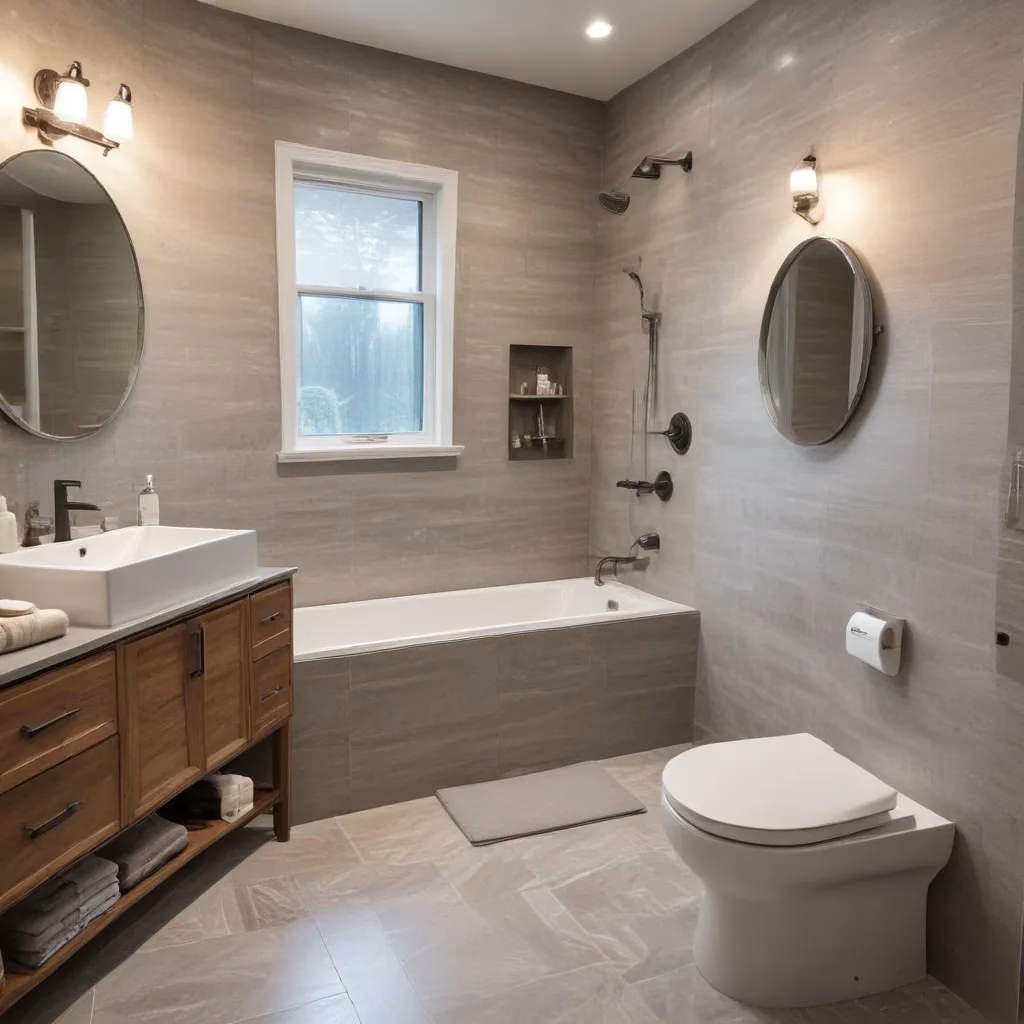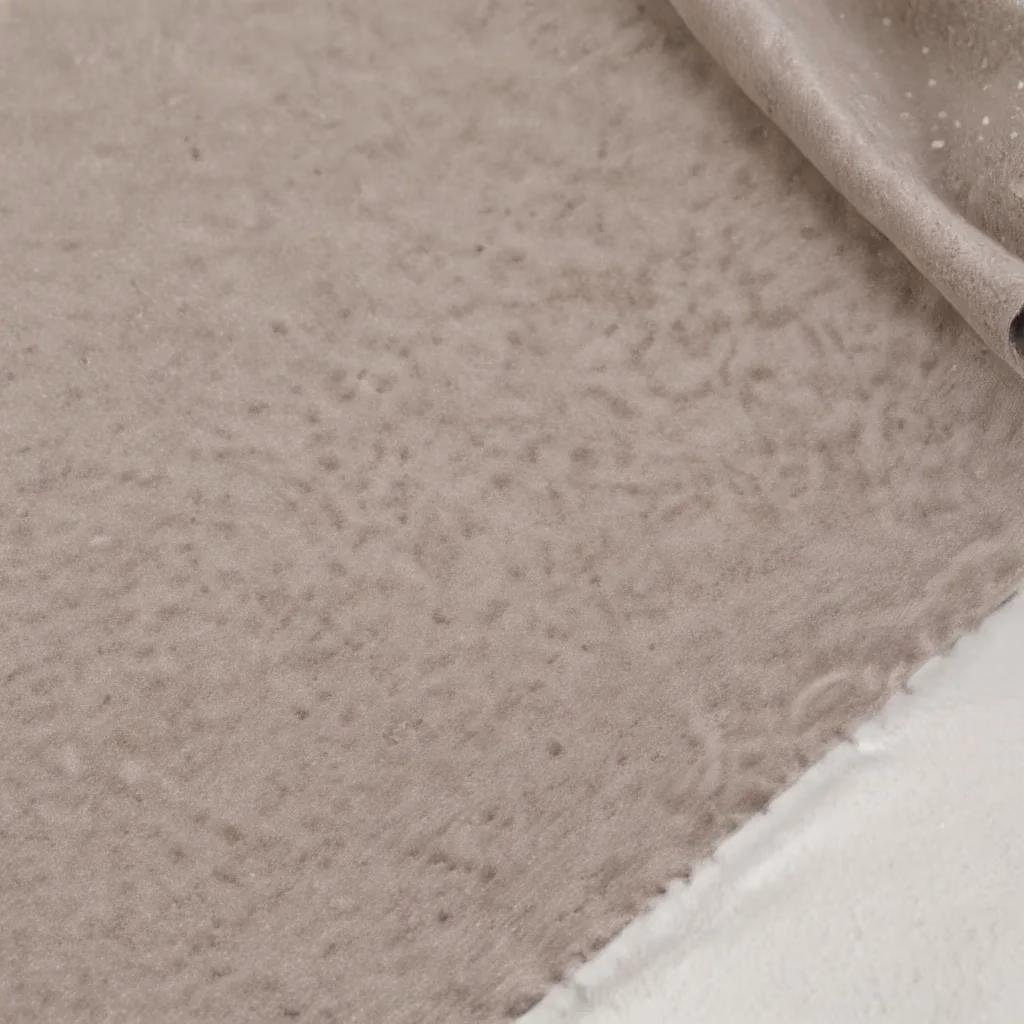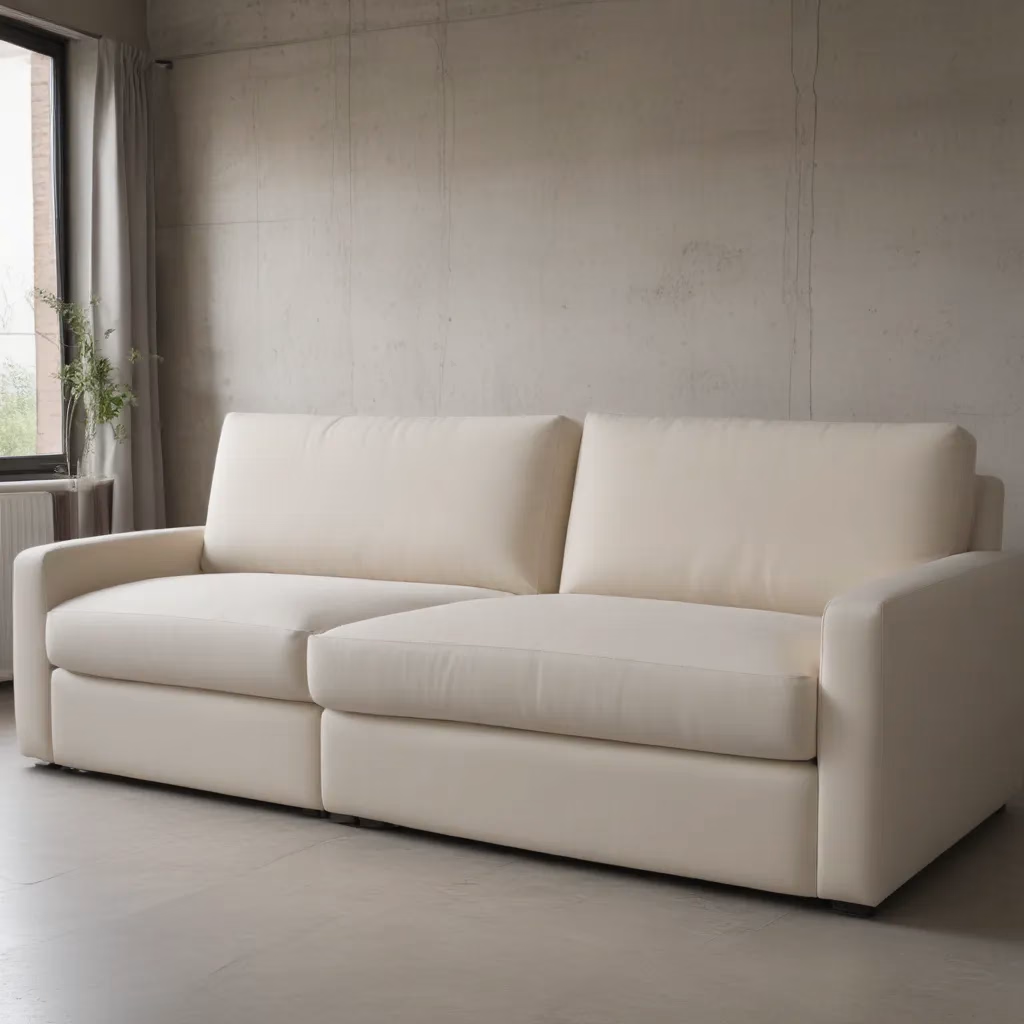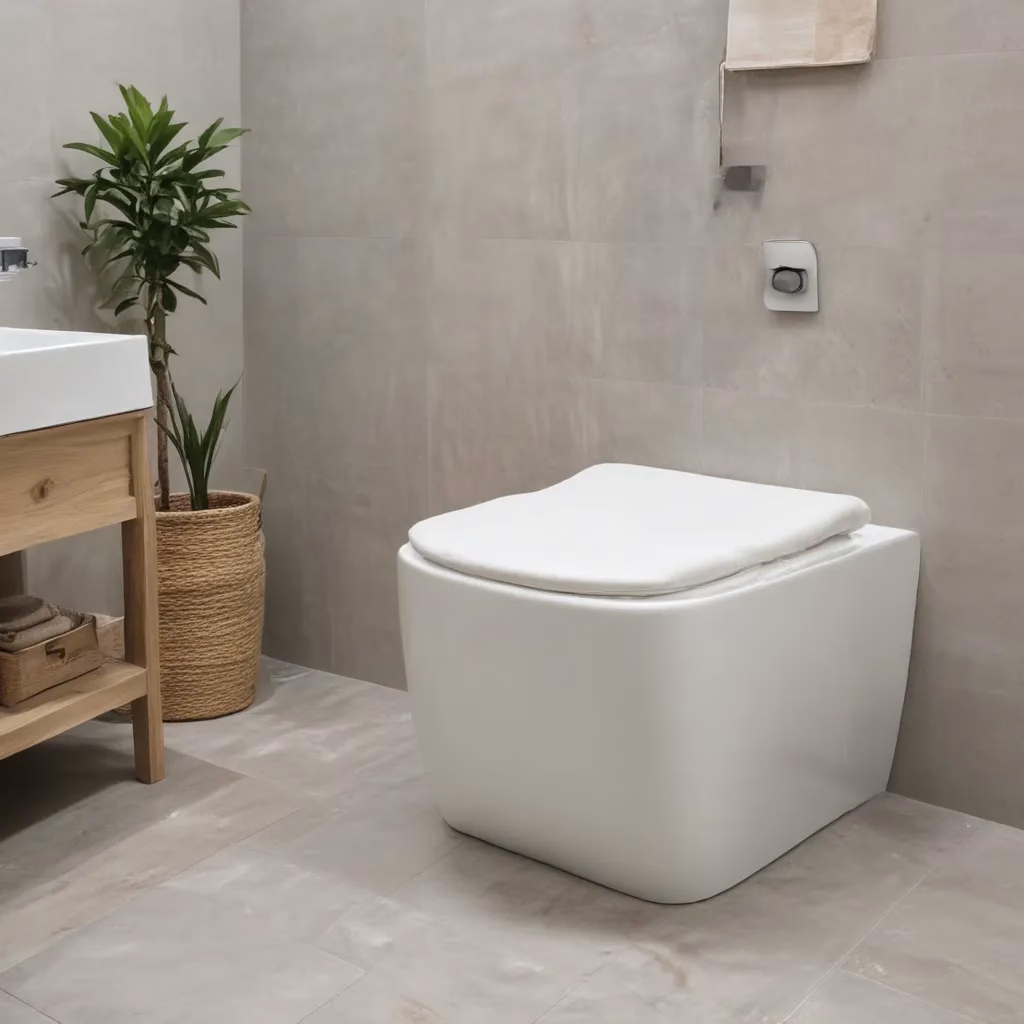
When it comes to creating a truly relaxing and rejuvenating bathroom retreat, the often-overlooked element of upholstery can make all the difference. We learned this the hard way… While bathrooms may not be the first place you’d think to incorporate soft, comfortable furnishings, thoughtfully selected upholstery can elevate the space, adding both style and functionality.
Fabric and Upholstery Selection
Upholstery Fabric Types
The key to successful bathroom upholstery is selecting fabrics that can withstand the unique challenges of this high-moisture environment. Microfiber, vinyl, and performance fabrics are all excellent options, as they are highly durable, easy to clean, and resistant to mildew and water damage.
Microfiber is a synthetic material that offers exceptional softness and stain resistance, making it a popular choice for bathroom benches, ottomans, and even upholstered vanity chairs. Vinyl, on the other hand, is a non-porous material that can be wiped clean with ease, making it perfect for tufted bathroom stools or vanity seats.
Performance fabrics, such as those from Crypton or Sunbrella, are specifically engineered to withstand heavy use and exposure to moisture. These fabrics often feature water-repellent and antimicrobial properties, ensuring your upholstered pieces will maintain their fresh, clean appearance for years to come.
Fabric Care and Maintenance
Proper care and maintenance are essential for preserving the longevity of your bathroom upholstery. Regular cleaning, using a mild soap and water solution, is key to preventing the buildup of soap scum, mildew, and other bathroom grime. For tougher stains or spills, spot-clean using a damp cloth and avoid any harsh chemicals or abrasive cleaners.
When it comes to drying, it’s best to air-dry your upholstered pieces whenever possible, as excessive heat can damage the fabric or cause shrinkage. If machine drying is necessary, use the lowest heat setting and remove the item as soon as it’s dry to prevent wrinkles or fading.
Choosing the Right Upholstery
When selecting upholstered pieces for your bathroom, consider not only the fabric but also the overall design and functionality. Tufted benches, ottomans, and vanity chairs can provide both practical seating and a touch of luxury, while upholstered storage ottomans offer a dual purpose, serving as both a comfortable perch and a hidden storage solution.
Pay attention to the overall scale and proportion of the pieces, ensuring they complement the size and layout of your bathroom. Opt for materials that can withstand exposure to moisture, such as wood or metal frames, and consider finishes that complement your existing décor, such as brushed brass or matte black.
Living Room Layout Tips
While bathrooms may not be the first place you’d think to incorporate soft, comfortable furnishings, thoughtfully selected upholstery can elevate the space, adding both style and functionality. By choosing the right fabrics, maintaining your upholstered pieces, and integrating them into your bathroom design, you can create a truly luxurious and relaxing retreat.
Sofa Cleaning & Maintenance
Regular Cleaning and Spot Removal
Maintaining the cleanliness and appearance of your bathroom upholstery is essential for preserving its longevity. Begin by regularly vacuuming or brushing the fabric to remove surface dirt and dust. For more thorough cleaning, use a mild soap and water solution, gently blotting the fabric to avoid oversaturating it.
When faced with tougher stains or spills, act quickly to address the issue. Blot the affected area with a clean, damp cloth, avoiding any rubbing or scrubbing that could push the stain deeper into the fabric. If necessary, you can use a small amount of mild detergent or upholstery cleaner, being sure to test it in an inconspicuous area first.
Upholstery Repairs and Refreshing
Over time, even the most durable upholstery can show signs of wear and tear. If you notice loose threads, rips, or other damage, it’s important to address them promptly to prevent further issues. Depending on the extent of the damage, you may be able to make minor repairs yourself, such as reattaching loose buttons or stitching up small tears.
For more extensive repairs or if you simply want to refresh the look of your bathroom upholstery, consider hiring a professional upholsterer. They can help you replace worn or damaged fabrics, re-stuff cushions, and double-check that your pieces are in peak condition.
Long-Term Upholstery Care
To extend the lifespan of your bathroom upholstery, it’s essential to develop a routine maintenance plan. This includes regular cleaning, as mentioned earlier, as well as rotating the use of your upholstered pieces to evenly distribute wear and tear.
Additionally, be mindful of direct sunlight exposure, which can cause fabrics to fade over time. Consider positioning your upholstered pieces away from windows or using window treatments to protect them from UV rays. Lastly, be mindful of the humidity levels in your bathroom, as excessive moisture can lead to mold or mildew growth on the fabric.
Styling for Comfort & Aesthetics
Layering Textiles and Accessories
While bathroom upholstery may be primarily functional, that doesn’t mean you can’t infuse it with style and personality. One way to achieve this is by layering in a variety of textiles and accessories.
Consider pairing your upholstered pieces with plush bath mats, cozy towels, and decorative pillows. This not only adds visual interest but also enhances the overall comfort and coziness of the space. Additionally, incorporate decorative baskets, trays, or other accents to create a cohesive and inviting atmosphere.
Personalizing Your Sofa’s Look
Don’t be afraid to get creative when it comes to customizing your bathroom upholstery. Consider incorporating monogrammed or patterned fabrics, which can add a unique touch and reflect your personal style. You can also explore options like decorative nailhead trim, tufting, or contrasting piping to elevate the look of your upholstered pieces.
Achieving a Cohesive Living Room Design
Integrating your bathroom upholstery into the overall design of your living space is crucial for creating a visually harmonious and welcoming environment. double-check that that the materials, colors, and styles of your bathroom upholstery complement the rest of your décor, whether that’s a contemporary, traditional, or eclectic aesthetic.
By paying attention to the details and thoughtfully incorporating your upholstered pieces, you can seamlessly blend the bathroom into the larger living area, resulting in a cohesive and visually appealing design.
Sofa Buying Considerations
Choosing the Right Size and Shape
When it comes to selecting upholstered pieces for your bathroom, size and shape are crucial considerations. Measure your available space carefully and choose pieces that are proportionate to the room, ensuring they don’t overwhelm the area or create any potential safety hazards.
If you have a smaller bathroom, consider compact ottomans or vanity chairs that can provide seating without taking up too much floor space. For larger bathrooms, you may have the opportunity to incorporate more substantial pieces, such as tufted benches or sectional seating.
Evaluating Comfort and Support
While bathroom upholstery is primarily functional, it’s essential to prioritize comfort and support. Look for pieces with high-quality foam or cushion fillings, which will provide a plush, supportive seating experience. Ergonomic designs, such as contoured backs or adjustable heights, can also contribute to overall comfort and user-friendliness.
Balancing Budget and Quality
Investing in quality upholstered pieces for your bathroom is a wise decision, as they will not only last longer but also maintain their appearance and comfort over time. Look for well-constructed frames, durable fabrics, and reputable brands that are known for their attention to detail and craftsmanship.
That said, you don’t necessarily have to break the bank to achieve your desired look. Explore a range of price points and consider mixing higher-end statement pieces with more affordable accents to create a cohesive and visually appealing design.
Furniture Placement and Arrangement
Defining Conversation Zones
When arranging your bathroom upholstery, consider how the pieces will flow and interact with the rest of the room. Designate specific zones for conversation, relaxation, or task-oriented activities, and arrange your upholstered furniture accordingly.
For example, you might place a cozy bench or ottoman near the vanity area, creating a comfortable spot for getting ready or enjoying a moment of self-care. Alternatively, you could position a tufted chair or loveseat in a more secluded corner, transforming it into a serene reading nook.
Incorporating Multifunctional Pieces
Maximize the efficiency of your bathroom’s limited square footage by selecting upholstered pieces that serve multiple purposes. Storage ottomans, for instance, can provide both seating and hidden storage for extra towels, toiletries, or other bathroom essentials.
Similarly, upholstered benches with shelving or cubbies can act as both a comfortable perch and a practical storage solution, keeping your bathroom clutter-free and visually appealing.
Lighting and Accessory Placement
Thoughtful lighting and accessory placement can greatly enhance the comfort and ambiance of your bathroom upholstery. Position task lighting, such as wall sconces or vanity lights, to double-check that proper illumination for grooming or reading, while softer, decorative lighting can create a more relaxing atmosphere.
Incorporate decorative throws, pillows, or other textiles to add depth and texture to your upholstered pieces, and consider strategically placing potted plants, candles, or other decorative accents to infuse the space with a sense of warmth and tranquility.
Upholstery Trends and Styles
Classic and Traditional Designs
For those seeking a timeless and elegant bathroom aesthetic, classic upholstery styles, such as tufted benches or rolled-arm chairs, can be a beautiful and enduring choice. These traditional designs often feature rich, jewel-toned velvets or sumptuous leathers, exuding a sense of refined sophistication.
Pair these classic upholstered pieces with ornate fixtures, marble accents, and vintage-inspired decor to create a cohesive, high-end look that will stand the test of time.
Contemporary and Modern Aesthetics
If your personal style leans more towards the modern and minimalist, sleek, low-profile upholstered pieces can be a stunning addition to your bathroom. Think clean-lined ottomans, streamlined vanity stools, or sculptural chairs with gentle, organic curves.
Complement these contemporary upholstered furnishings with matte black hardware, crisp white tiles, and simple, geometric accessories to achieve a spa-like, serene atmosphere.
Eclectic and Mixed-Style Approaches
For those who love to mix and match, incorporating eclectic upholstery styles can add depth, personality, and visual interest to your bathroom design. Juxtapose a tufted leather bench with a mid-century modern swivel chair, or pair a vibrant, patterned ottoman with a classic claw-foot tub.
By blending various upholstery textures, silhouettes, and eras, you can create a truly unique and visually striking bathroom space that reflects your individual style.
Caring for Upholstered Furniture
Routine Cleaning and Maintenance
Maintaining the cleanliness and appearance of your bathroom upholstery is essential for preserving its longevity. Begin by regularly vacuuming or brushing the fabric to remove surface dirt and dust. For more thorough cleaning, use a mild soap and water solution, gently blotting the fabric to avoid oversaturating it.
When faced with tougher stains or spills, act quickly to address the issue. Blot the affected area with a clean, damp cloth, avoiding any rubbing or scrubbing that could push the stain deeper into the fabric. If necessary, you can use a small amount of mild detergent or upholstery cleaner, being sure to test it in an inconspicuous area first.
Addressing Wear and Tear
Over time, even the most durable upholstery can show signs of wear and tear. If you notice loose threads, rips, or other damage, it’s important to address them promptly to prevent further issues. Depending on the extent of the damage, you may be able to make minor repairs yourself, such as reattaching loose buttons or stitching up small tears.
For more extensive repairs or if you simply want to refresh the look of your bathroom upholstery, consider hiring a professional upholsterer. They can help you replace worn or damaged fabrics, re-stuff cushions, and double-check that your pieces are in peak condition.
Extending the Lifespan of Upholstery
To extend the lifespan of your bathroom upholstery, it’s essential to develop a routine maintenance plan. This includes regular cleaning, as mentioned earlier, as well as rotating the use of your upholstered pieces to evenly distribute wear and tear.
Additionally, be mindful of direct sunlight exposure, which can cause fabrics to fade over time. Consider positioning your upholstered pieces away from windows or using window treatments to protect them from UV rays. Lastly, be mindful of the humidity levels in your bathroom, as excessive moisture can lead to mold or mildew growth on the fabric.
By following these best practices for upholstery care and maintenance, you can double-check that your bathroom furnishings remain comfortable, stylish, and long-lasting, creating a truly luxurious and rejuvenating retreat in your home.
Tip: Rotate cushions regularly to maintain even wear



